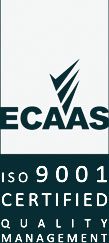Did you know that sepsis is estimated to contribute to six million deaths globally each year?
Sepsis is a life-threatening condition that occurs when the body’s response to infection injures its own tissues and organs.
In Australia, at least 18,000 people are treated for sepsis in intensive care units (ICU) annually, with around 5,000 losing their lives. This is likely a significant underestimate, as most sepsis deaths are attributed to the underlying infection (for example, pneumonia or influenza) and are therefore not accurately counted.
In 2016, a national awareness survey found 60% of Australians had not heard of sepsis, and only 14% could name one of its symptoms. Sepsis is an unpredictable and time-critical condition requiring rapid recognition and treatment with antibiotics. For each hour that medical care is delayed, the risk of death increases by around 8%, and with approximately 70% of cases originating outside of hospital, low public awareness of sepsis in Australia leads to delayed recognition and treatment, and a higher likelihood of death or disability for patients.
For people who survive sepsis, up to half are left with impaired physical or mental function, or permanent disability. Many sepsis survivors face limb amputations, cognitive impairment and ongoing health issues. Up to two-thirds report suffering post-traumatic stress disorder.
Currently there is no integrated approach to follow-up and care for survivors and their families, which is worsened by a limited understanding across the Australian healthcare sectors of post-sepsis syndrome.
The economic burden of sepsis on individuals and at an Australian societal level is substantial. The true cost of sepsis to the Australian healthcare system and community is unknown. Preliminary research in Australia puts the cost of treating sepsis in ICUs at AU$846 million annually, but this does not account for the costs of treating sepsis outside ICUs, or the ongoing treatment of survivors and costs related to loss of earnings and productivity. The total financial burden of sepsis is estimated to exceed AU$1.5 billion.
In April 2018, the Australian Sepsis Network and The George Institute for Global Health launched a national action plan to reduce the Australian burden of sepsis by increasing public and healthcare worker awareness, establishing a nationally recognised clinical standard of care for sepsis detection and treatment, and improving support for sepsis survivors.
Click here to download the National Action Plan.
Download awareness posters for sepsis symptoms:
If your clinic or medical unit would like to receive any of the posters in jpg or glossy A4 prints, please contact the Australian Sepsis Network.
Click here to visit the HealthPathway for Adult Sepsis (Including Meningitis).
For a list of all localised pathways see:
Mid and North Coast Localised Pathways
Username: manchealth
Password: conn3ct3d
For further information about HealthPathways email [email protected] or [email protected].



